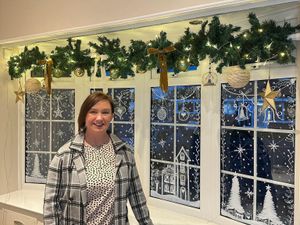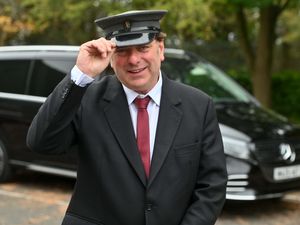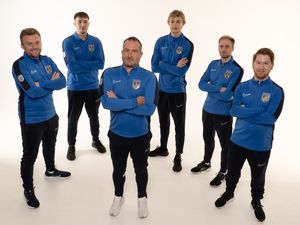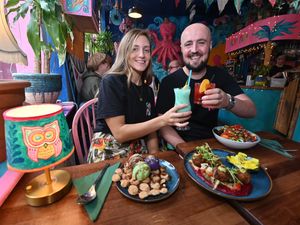Real life: Build your own Westfield kit car
It’s like the ultimate adult Lego set – a kit that turns into a two-seater, open-top sports car that you can actually drive.
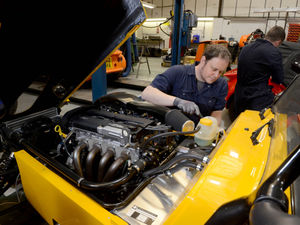
Building their own set of wheels from scratch is at the top of the bucket list for many motoring enthusiasts.
And the Black Country’s own Westfield Sportscars has been helping to make their dreams come true for 35 years.
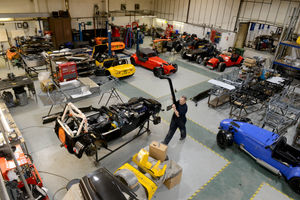
Around 200 of the small, lightweight cars, the majority as kits, leave the factory in Kingswinford heading to all four corners of the Earth every year.
The machines, made up of a steel spaceframe chassis covered in a lightweight fibreglass body, are not really designed for the daily commute but are marketed instead as perfect for weekend driving or for the racetrack.
“They appeal to people’s sense of what motoring used to be when it wasn’t just about transport, it was something to enjoy,” says Ian Ridgway, who works on the production line.
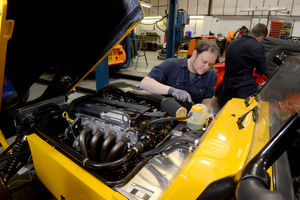
With around 1,800 individual components and an average build time of between 120 to 150 hours, assembling one is definitely no mean feat.
But the kits are designed so that a complete novice could follow the detailed instruction manual and successfully complete the project.
“We often say if you can read a book and hold a spanner, you can build a Westfield car. As long as you can follow instructions well, you shouldn’t have any real problems. Confidence is the main thing, it’s a big task and sometimes people can be a little unsure but we do a lot of the more technical work first. We also offer support throughout the build and afterwards.
“A lot of effort and investment has gone into making the build process as straight forward as possible. We supply all the parts, the customer only needs to supply the time, fuel and water,” says sales and marketing manager Simon Westwood.
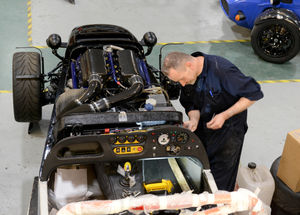
Westfield began in the spring of 1982, when historic grand prix competitor and engineer, Chris Smith, decided to design and build a replica of one of his all-time favourite race cars – the 1956 Lotus XI Le Mans.
His creation, produced in his home garage at Westfield House, Armitage, immediately attracted admirers and he was inundated with requests from enthusiasts wanting one for themselves.
By the following Easter in 1983 the company Westfield Sportscars had been created. Since then it has continued to grow and now more than 12,000 cars have been sold worldwide from its factory on the Gibbons Industrial Park.
The company, part of Potenza Sports Cars, is proud of being British-owned and is also committed to using Midland suppliers where possible.
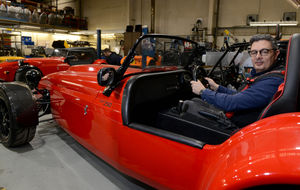
For each car, the chassis comes from Brierley Hill, the fibreglass bodywork from Kidderminster, the wheels from West Bromwich and the trim from Telford.
“About 50 per cent comes from local suppliers, this is important to us. It’s more difficult now, because there are less options because businesses have closed, but we like to keep the local supply base. It makes life so much easier and it keeps the money in the area,” says Simon.
Customers have 12 colours to choose from and there are a range of options for customers to pick to make them as individual as possible. “Although the model may be the same, the cars can look very different because the customer has a lot of options to choose from,” adds Simon.
The Westfield Classic and FW Special Editions cost £17,638 as a complete kit for home build or they can be built in the factory and be road registered starting from £21,449.
“The majority of car sales are in the UK but we do have cars and kits that go all over the world including India, Canada and New Zealand. The cars built here in the factory are exactly the same as those built from the kits – the only difference is that we assemble them rather than the customer. We build them in exactly the same way as the customer would build them at home
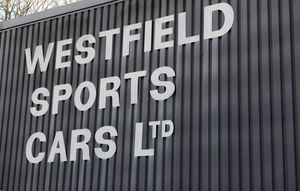
“Seventy-per-cent of people still like to build their own. I think people like the challenge and satisfaction of building something themselves, they find it rewarding.
“A lot of our customers are serial builders so they will build a car from a kit, then sell it, then build another one and sell it and so on.
“For them it’s all about the enjoyment they get out of building the car rather than driving the car once they are finished.
“We also get a lot of father and son teams who work on the cars together and where the father may want to teach his son some of the skills involved especially as a lot of people tend to take their car to a garage mechanic now rather than do the repairs themselves,” says Simon.
“They are a toy and a bit of fun – probably a family’s third or fourth car. But they will be their owner’s pride and joy, they are very passionate about them, especially those who have built them themselves.
“There is nothing better than when a customer says they have finished their car and you can see how happy they are.
“We had to pick one up from Southend for its Individual Vehicle Approval (IVA) and the owner said to us ‘you will be careful with her won’t you’. I love that. These cars mean so much to their owners and the ownership of them tends to be a long time.
“They may only do 1,500 miles but they enjoy every single mile,” he adds.
For assembly technician Ian, who has been working at Westfield since 1996, it’s a job that comes with a lot of perks.
“We get all of the joys of owning one of these cars without any of the costs involved. We get to build them, we are involved in every step of the process and then we get to test drive them before they go off to their new owners,” he says.
The 41-year-old who lives in Kingswinford says building the cars never gets old and customers get the same enjoyment.
“Although the way we build them is always the same, the cars are always different because they are made to the individual customer’s specifications for example they might have different interiors.
“There are just so different to modern cars, there are none of the modern aids so it’s back to basics but in a good way,” says Simon.
“It’s a rawer driving experience because you are low to the ground and you get that sense of speed even when you aren’t driving at high speeds.
“When a customer builds one, they get to know every nut and bolt of their car.”


